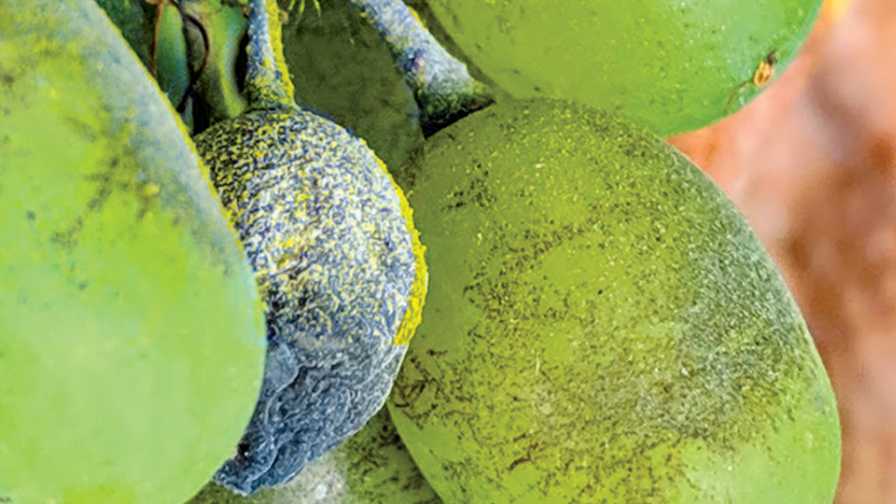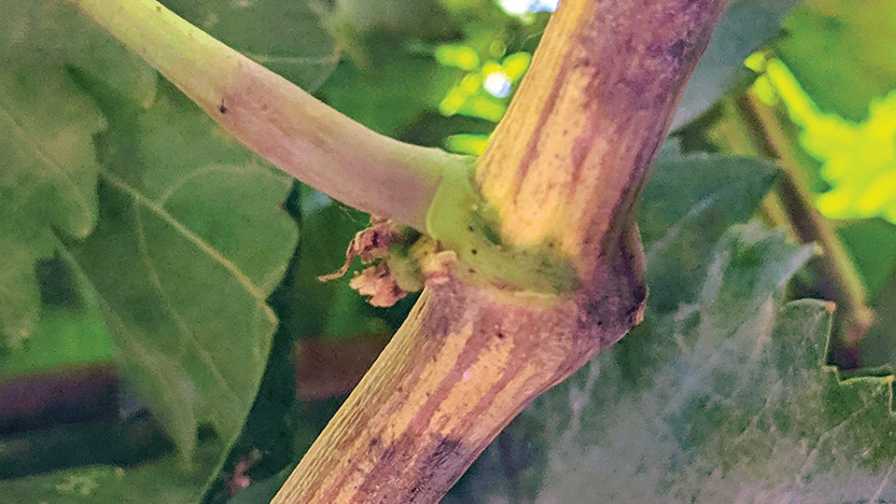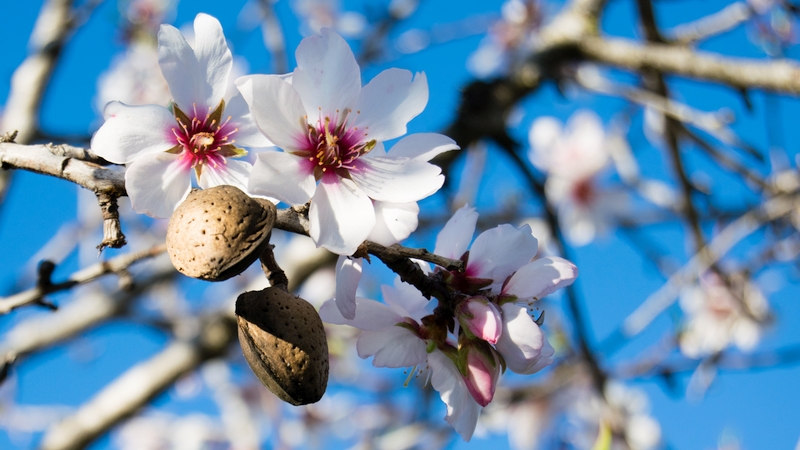Why Harvest is a Good Time to Review Grape Disease Management

Severe powdery mildew infections of raisin grapes cause berry necrosis and scarring.
Photo by Matthew Fidelibus
This past spring was unusually rainy in many California grape-growing regions, and the warm and moist environment provided excellent conditions for powdery mildew and Botrytis shoot blight. Damage from either or both pathogens has accumulated over the course of the season and is now plainly evident in many vineyards, with symptoms including lesions on shoots, leaves, and scarred, necrotic, or rotted clusters of fruit. As this challenging season comes to a close, vineyard managers should assess damage, review their disease management program, and determine what changes are warranted for next year.
As harvest nears, growers tend to pay extra attention to their vineyards, and judging by the calls I received this year, many were finding that their mildew programs were not as effective as they assumed they would be. Severe mildew infections on immature clusters of fruit can stunt berry growth, induce berry splitting, and even cause the entire cluster to die. Less severe infections can indirectly lead to yield loss by causing scarring that predisposes the berries to cracking during maturation.
Cracking in maturing fruit provides an entryway to other microorganisms that will colonize the wound and develop into sour rot. Poorly controlled mildew will leave characteristic, dark-colored scars on grape shoots, and mildew may infect the preformed shoots in compound buds. Bud infections result in “flag shoots” that are already covered in mildew when they emerge the following spring. Flag shoots extend severe mildew problems from the year before into a new season.
Botrytis shoot blight was also particularly severe in spring 2019. Optimal temperatures and wet weather created the conditions necessary for the disease, which requires that green tissues remain exposed to free moisture for extended periods at appropriate temperatures. Leaf axils, forks in tendrils and rachises, flower parts, and serrated leaf margins tend to collect and hold rain drops, keeping such tissues wet, and Botrytis infections were observed in all these organs.
As the season progressed, temperatures increased, the rain stopped, humidity decreased, and the infections became dormant. However, the high amount of inoculum and dormant infections in the canopy and clusters of some vineyards has increased the risk of Botrytis bunch rot and sour rot occurring after veraison, especially if the fruit are exposed to cool and wet weather.

The shoot bearing this cluster was also severely scarred and mildew has likely colonized the compound bud shown. If so, shoots arising from the bud will serve as a source of early season inoculum next spring.
Photo by Matthew Fidelibus
Plan for Next Year
If powdery mildew or Botrytis were a problem for you this year, review your cultural practices and fungicide program and consider changes for next year. Sanitation can help control Botrytis, which overwinters in infected tissues, including mummified clusters of grapes. Removing infected tissues from the trellis and beneath the vines and disking them into the row middles will reduce inoculum.
In the following spring, employ canopy management practices, such as leaf removal in the fruit zone, that can reduce humidity, improve air movement, and increase exposure of the fruit to morning light. Proper selection and timing of fungicides is critical. Fungicides with activity against Botrytis and powdery mildew are available. Consult the University of California Integrated Pest Management Program (UC IPM) website for an updated list of products that may be used. This website contains a table of data comparing various fungicides, including their potential efficacy against various fungi and the FRAC group which to which their active ingredients belong.
It is important to select appropriate fungicides from different FRAC groups to help prevent the fungi from developing resistance to various fungicides. Selecting appropriate fungicides is important, but efficacy will also depend on spray timing and coverage. Coverage is optimized through proper spray rig calibration and maintenance. Additional information on powdery mildew, Botrytis, and other pest management considerations are available online.










